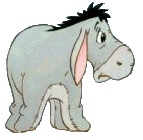The shaded area (C7:C9) is a named range called myRange.
2011-10-22_004651.jpg
I would like a count of names and/or a sum of column B of those people whose names do not contain any of the names in myRange.
This will be part, hopefully of a larger sumproduct formula where there are more conditions to satisfy.
(File attached in next message)







 Reply With Quote
Reply With Quote




 ) LOL.
) LOL.



